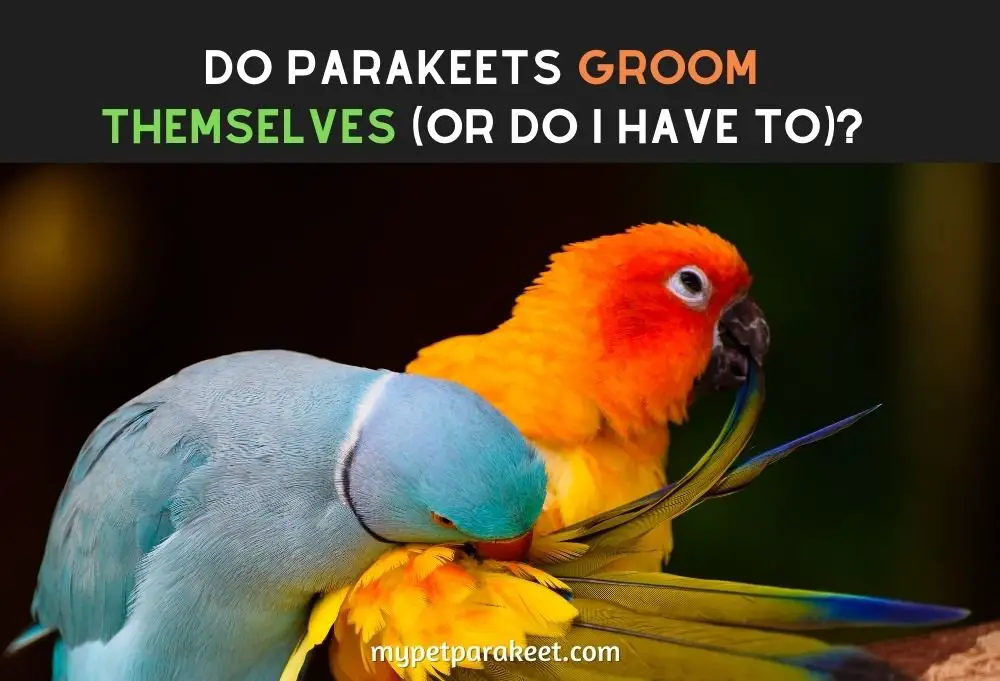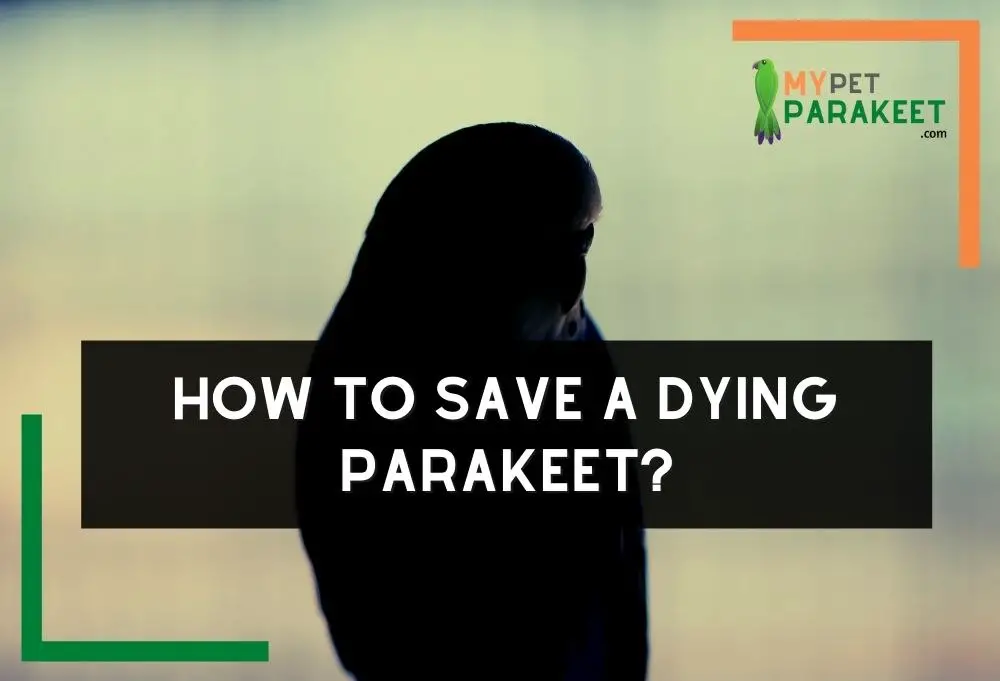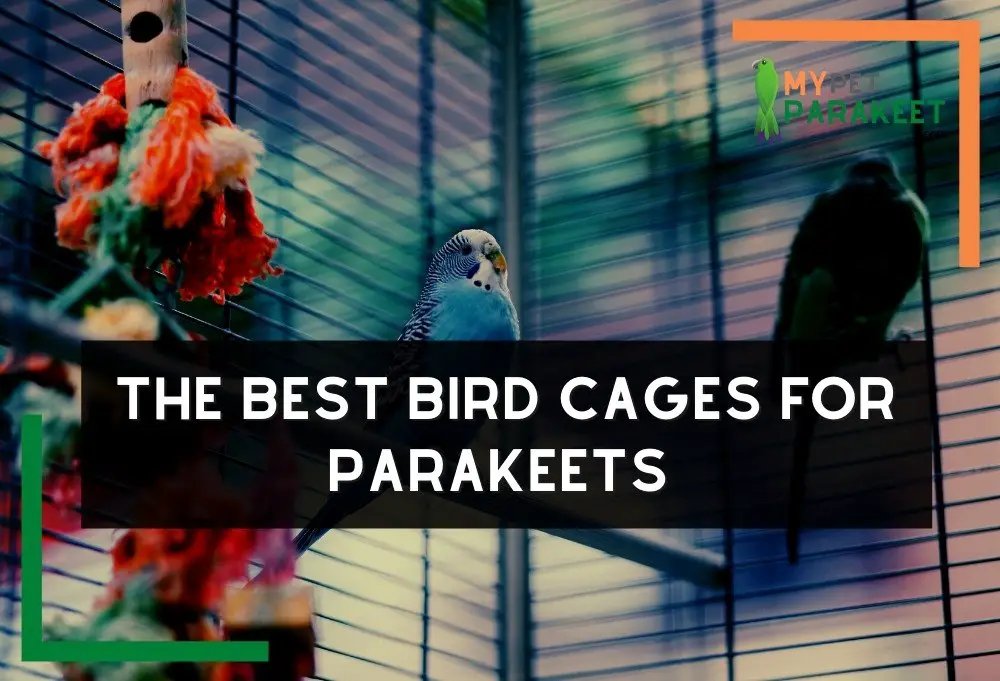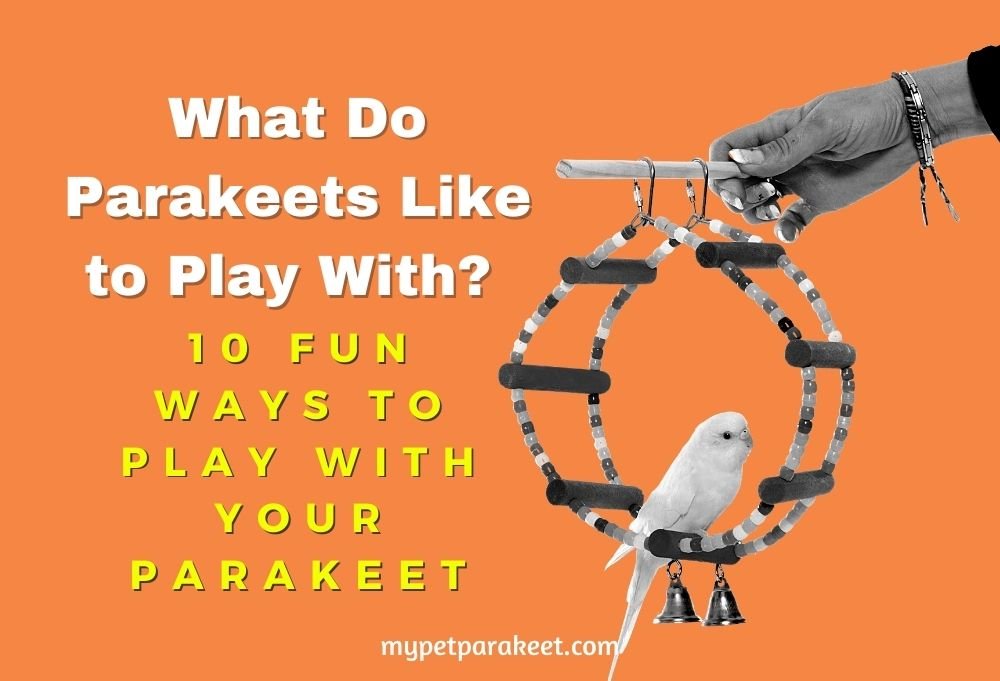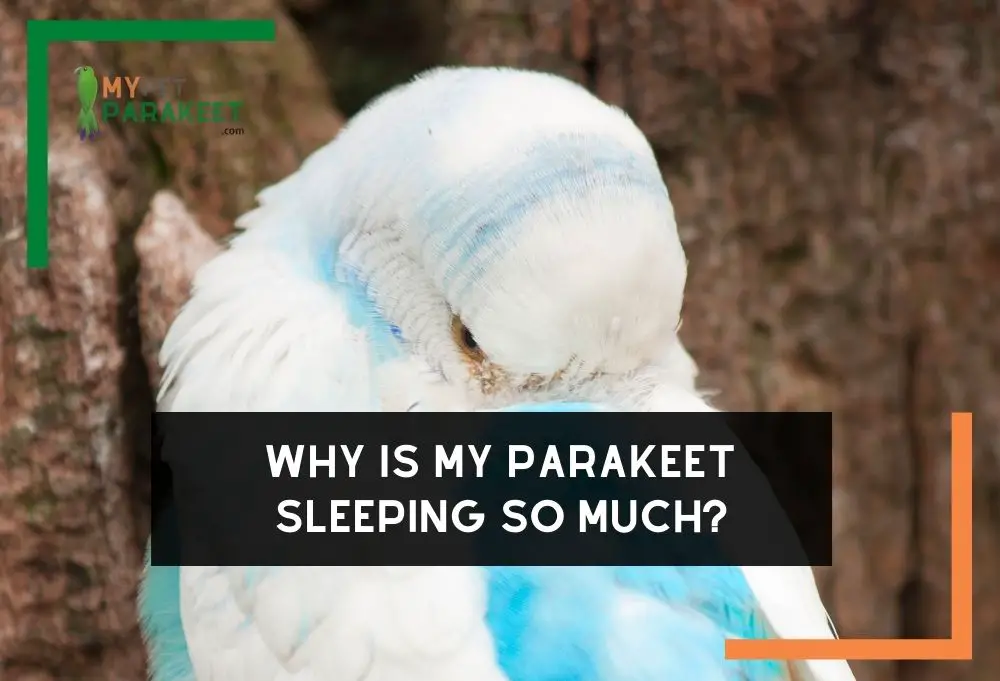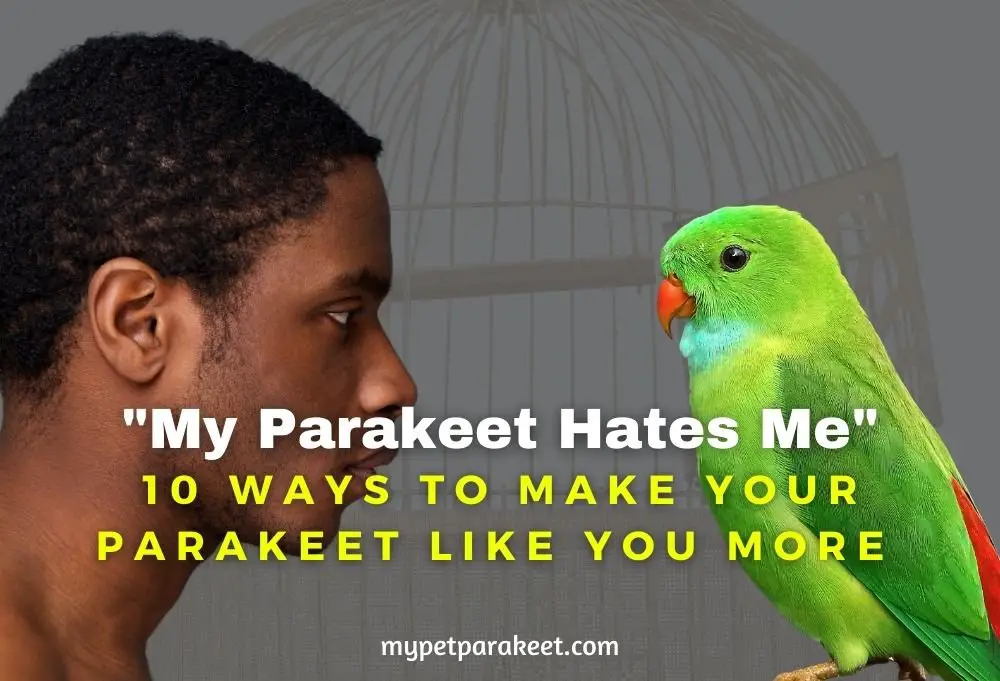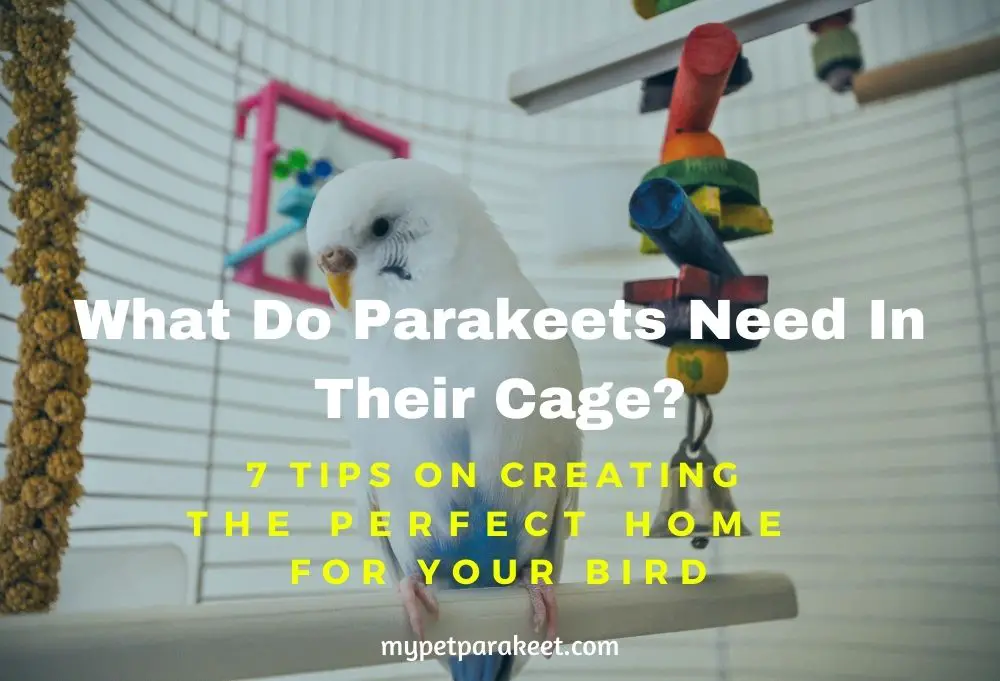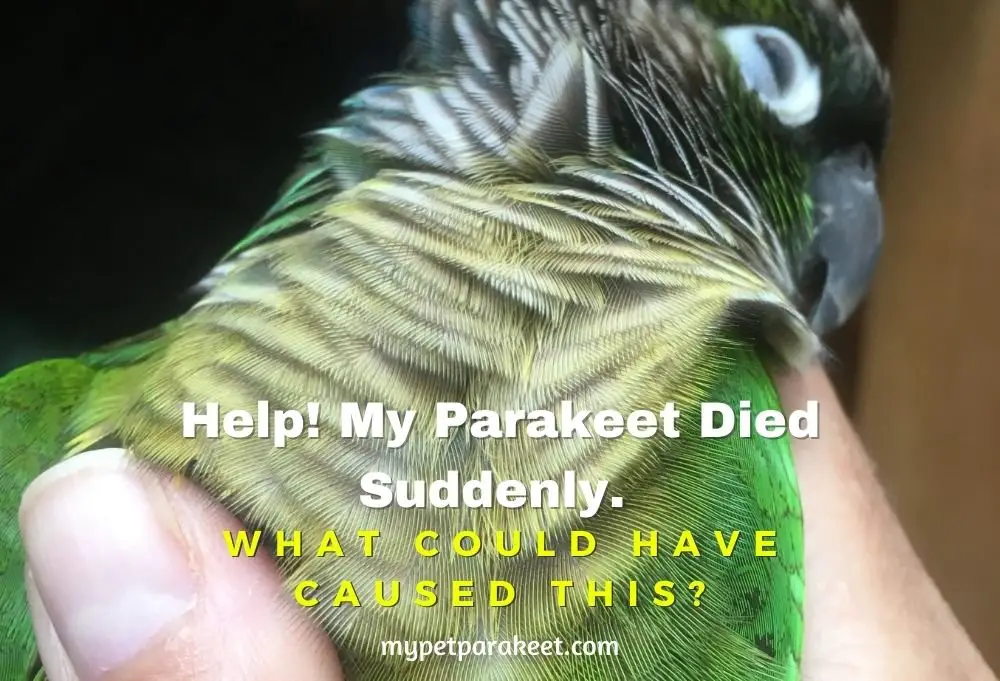If you have a parakeet and are wondering how often they should be groomed, then this post has the answers for you. We will cover everything from how to groom your parakeet's beak to whether or not they need a birdbath. So read on for all of your parakeet grooming needs!
First things first, do parakeets groom themselves? Yes! They do. But as their owner, there will be a few things you will need to do to assist them.
Parakeet Grooming Basics
- Preening
- Nail Trimming
- Bathing
- Wing Trimming
- Molting
Parakeet Preening
Self-grooming is an integral way that a parakeet looks after his health. You will notice your parakeet preening himself multiple times every day. Parakeets also spread oil from the gland at their tail to coat their feathers, which can appear like biting or pecking their tails. Regularly preening with your help will keep a parakeet's feathers, beak, and nails looking their best.
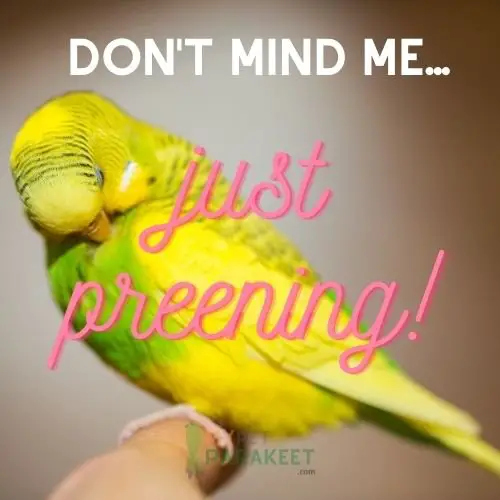
Parakeet Nail Trimming
Your parakeet will have to get its nails trimmed periodically, so it does not hurt itself on toys or perches. Trimming your parakeet's nails is a relatively straightforward procedure.
For trimming your parakeet's nails, only remove the hook on each nail. Trim in small increments to avoid cutting through the quick of your parakeet's claw.
Parakeet Bathing
One way to bathe your parakeet is through the use of a spray bottle, or you may bathe them by placing them in a sink and allowing water to trickle down from above.
Parakeets can bathe in their cage if you provide them with a small, flat saucer of warm water or a bathtub that either fits on the bottom of their cage or hangs from the side. Bathing is important for most birds as a way to maintain healthy feathers, so it's best not to deprive your pet of the chance.
Do Parakeets Need A Birdbath?
Yes, most small birds like parakeets need a birdbath.
A birdbath provides a good water source for exercising these little ones' wings and adds enjoyment to their environment. Parakeets also love the water stream as well as playing in it, so it's double-duty! In addition, they can bathe themselves while preening or drinking, which will keep them clean and cool on hot days.
The bath should be big enough that the parakeet can get wet without being crowded but not too deep to where the risk of drowning is possible. A shallow prop pool works great if placed near the base of their home tree to give them a sit-down place if needed.
Parakeet Wing Trimming
A good wing trim will keep your parakeet from flying away or into a window while he's out of his cage. One positive aspect of this is his inability to fly well. This should make him more dependent on you for transportation, which will manage him a lot easier.
It is important for birds to have enough wing feathers in order to glide down safely if they fly out of their cage.
Molting Parakeet
At some point in the year (once or twice), your bird will lose its feathers. It is a normal process. Don't worry; it will grow new ones soon!
You will know your parakeet has entered molting season when you see a lot of whole feathers in the bottom of the cage and are aware of their appearance, which consists of feather loss as well as small stubbly little aglets.
How Often Do Parakeets Groom Themselves?
The frequency and intensity of self-grooming can vary from one hour to all day long.
As the bird grows older, it will usually need more grooming time than a younger bird. In addition, its needs for grooming will increase when nesting as well as when they are molting.
Of course, each individual bird has different requirements that are dependent on their needs and state of health, so it is possible that at times individual birds may groom for hours a day while other times, the hours or minutes off can accumulate over days to weeks at a time!
How Do You Groom A Parakeet?
As previously mentioned, parakeets groom themselves very well. However, you can assist your parakeet by grooming it also. Groom your parakeet by taking special care in these two important areas: head and wings.
Head care includes cleaning the beak, combing feathers, checking for anything caught up in the crest or main feathers, and clearing any dust from around the eyes.
Wings require a thorough inspection for potential injuries or growths. When determining if a wing is injured to an unsafe degree, you need to be cautious of raw wounds, decreased ability to fly on that wing, bruises or swollenness near joints of toes and fingers, and distorted skin.
You will also want to check its nails just in case it has not groomed them itself.
Parakeet Beak Care
Do Parakeets Beaks Need To Be Trimmed?
Parakeets' beaks should not need to be trimmed as they do this themselves on their toys, a mineral block, or cuttlebone. The only time a parakeet's beak needs to be trimmed is when it has been injured or lost its upper and lower mandible (the part of the bird's mouth that holds food). However, if your parakeet's beak has grown too long, then you may need to trim it.
How Do I Know If My Parakeet's Beak Is Too Long?
Your parakeet's beak can become overgrown. Overgrown beaks can lead to painful infections in birds' mouths and may even make eating difficult or impossible.
If this happens, you will need to consult your avian veterinarian to find out the cause and get advice on caring for it. Once you know what is causing your parakeet's long beak, treatment can start and will only last a short amount of time.
You will know his beak is too long if it is causing him pain or if he can't eat his food properly. If you decide to treat it yourself at home, be sure not to cut too far down the beak so your parakeet can still eat properly.
But, if you are not confident, then please contact your avian veterinarian, and they will take a look at it for you to see what needs to happen next.
What Is A Cuttlebone For A Parakeet?
Cuttlebones are a natural way for parakeets to stay healthy and extend the life of their beaks. A parakeet with a dull or overlong beak may have difficulties eating properly which can lead to some common problems such as decreased digestion, appetite loss, weight loss, and ultimately death.
Similarly, germs that might otherwise go unnoticed by the immune system may gather there, usually causing infections in the process.
By providing your bird with a cuttlebone periodically, you're helping him avoid these problems and live longer. It provides calcium for your parakeet and helps to keep their nails trimmed, too! You can find these in most pet stores along with other supplies like cages and toys.
How to Get Rid of Parakeet Mites?
Dousing the cage with water will dislodge mites, so try to do this as often as possible.
Washing your hands before and after handling your bird also helps to stop the spread of any mites that might be on your fingers or in your home.
Rinsing out the bird's dishes can help prevent mite reproduction too.
In general, it is a good idea to keep the area as clean and dry as possible since extra humidity is one way that these mites reproduce. Bedding should also be changed on a regular basis. And if you notice any red bumps appearing around an eye or mouth, contact a vet for assistance with more intensive treatment options like fluconazole.
How To Keep Your Parakeet's Cage Clean?
Keeping your parakeet's cage clean will cut down your grooming efforts significantly. You should clean the cage out every day before feeding time, and a weekly deep clean is also helpful.
You will need to remove the bottom of your parakeet's cage, take it outside or into an open area, put on some protective gloves and wash any soiled parts with warm water and soap, as well as wipe down all wood surfaces that are not easy to get at when the bottom is on the cage.
Cleaning your parakeets' cage will also remove any droppings and old food which may cause illness or disease to develop in your pet, as well as provide a clean environment for them to live in.
Conclusion
In this blog post, we covered the basics of parakeet grooming and what you need to know about keeping your pet's cage clean. We also discussed how to get rid of mites in a birdcage. If your pet has been scratching or biting themselves more than usual (and not just when they are playing with other birds), then it may be time for an exam by their veterinarian.
You can read our article on examining beaks here if you're concerned that your pet needs its beak trimmed. Finally, some people wonder if their parakeets' wings should be trimmed, and the answer is usually ‘yes' for your pet's own safety.

